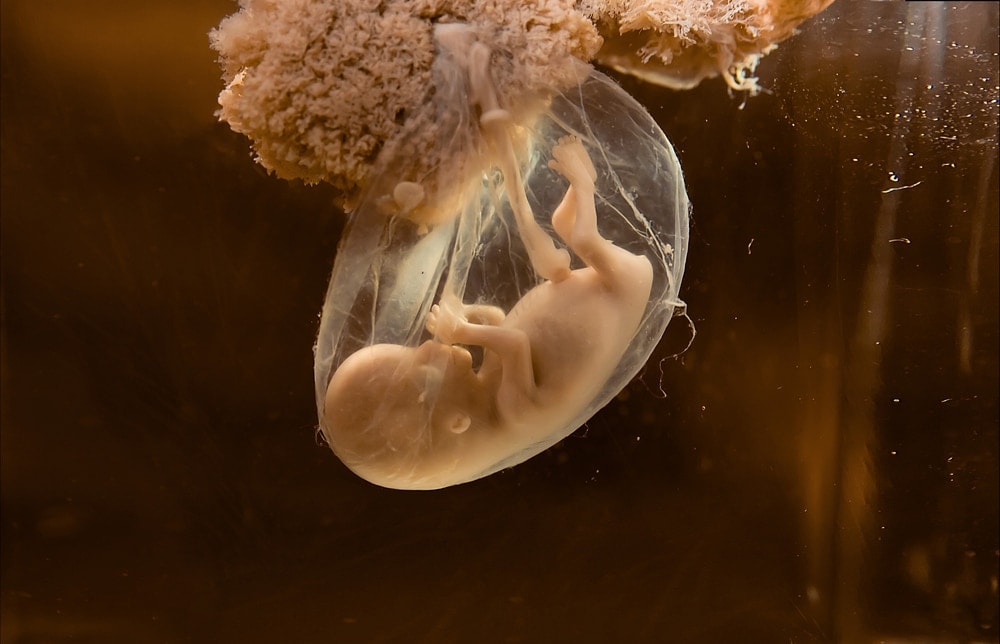Placenta, Umbilical Cord, and Amniotic Sac
Your baby will develop inside your uterus with the help of a fetal life-support system composed of the placenta, the umbilical cord, and the amniotic sac (which is filled with amniotic fluid). Learn more about your baby’s fetal life-support system:
What is the placenta and what does it do?
The placenta has been described as a pancake-shaped organ that attaches to the inside of the uterus and is connected to the fetus by the umbilical cord. The placenta produces pregnancy-related hormones, including chorionic gonadotropin (hCG), estrogen, and progesterone.
The placenta is responsible for working as a trading post between the mother’s and the baby’s blood supply. Small blood vessels carrying the fetal blood run through the placenta, which is full of maternal blood. Nutrients and oxygen from the mother’s blood are transferred to the fetal blood, while waste products are transferred from the fetal blood to the maternal blood, without the two blood supplies mixing.
The placenta is expelled from the uterus in a process called the after-birth. One possible problem in pregnancy is placenta previa, where the placenta is attached near or over the cervix. As the fetus grows, pressure on the placenta can cause bleeding. This condition requires medical management to ensure safe labor and delivery for you and your baby.
What is the umbilical cord and what does it do?
The umbilical cord is the life-line that attaches the placenta to the fetus. The umbilical cord is made up of three blood vessels: two smaller arteries which carry blood to the placenta and a larger vein which returns blood to the fetus. It can grow to be 60 cm long, allowing the baby enough cord to safely move around without causing damage to the cord or the placenta.
After the baby is born, the cord is cut (something the baby’s father may wish to do); the remaining section will heal and form the baby’s belly button. During pregnancy, you may find out the umbilical cord is in a knot or is wrapped around a part of your baby’s body. This is common and cannot be prevented, and it usually does not pose any threats to the baby.
Cord Blood & Cord Tissue Banking?
After your baby is born, stem cells from the cord blood and tissue can be collected and saved for potential future use. This process is known as banking. If Learn more about the benefits of cord blood banking from our sponsors ViaCord and Affordable Cord Care.
What is the amniotic sac and what does it do?
The amniotic sac is filled with amniotic fluid. This sac is your baby’s home, gymnasium, and protection from outside knocks, bumps, and other external pressures. The amniotic sac allows the fetus ample room to swim and move around which helps build muscle tone. To keep the baby cozy, the amniotic sac and fluid maintain a slightly higher temperature than the mother’s body, usually 99.7 F.
At week 10, there are around 30 ml of fluid present. The amniotic fluid will reach a peak around weeks 34-36 at about 1 liter. When your water breaks, it is this sac that ruptures and this fluid that leaves the body. Your baby’s life is still being supported by the umbilical cord, and you should be meeting your baby soon!
Are the placenta, umbilical cord, and amniotic sac different when dealing with multiple births?
Identical twins often share the same placenta, usually have separate amniotic sacs, and always have their own umbilical cords. Non-identical twins have separate placentas, amniotic sacs, and umbilical cords.
Want to Know More?
- Baby Development Month by Month Video
- Bonding with Your Baby While Pregnant
- Prenatal Care in a Multiples Pregnancy
- Vitamin D and Pregnancy
class=”mac”>Última actualización: 07/2014






